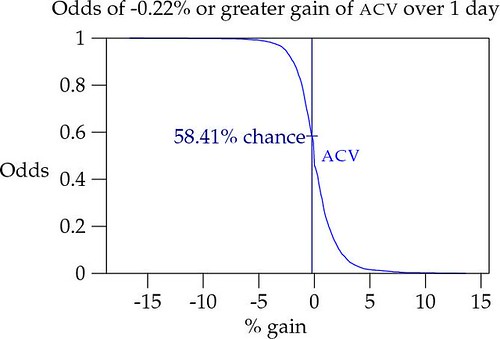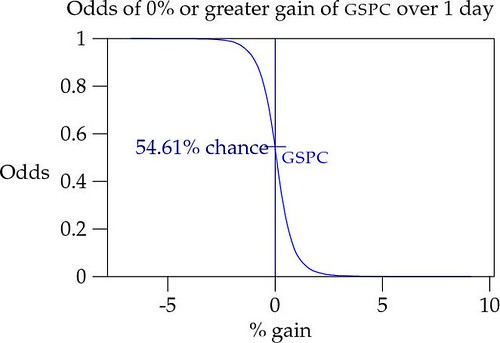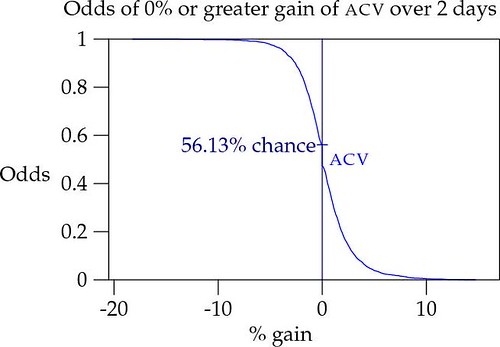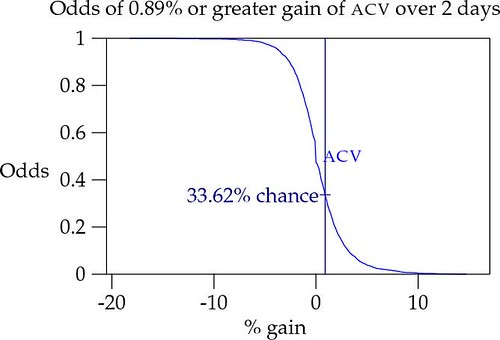Dean Oliver (the Bill James of basketball), describes the Four Factors of Basketball Success. They are shooting, taking care of the ball, offensive rebounding, and getting to to foul line. There are hundreds of other statistics that are of interest, but unless they measure aspects of these factors, they aren't all that important to actual basketball success. Think of the Four Factors as a framework for interpretation.
I believe that there are Four Factors for value creation as well. Obviously there are even more statistics that may be important to understanding a company, but these four represent a complete path from customer to shareholder. I'm going to use my new favorite investment, First Marblehead, to illustrate the concepts.
Most public companies derive their value from sales. (The exception are companies like biotechnology firms that hope to turn ideas or other assets into sales at a later date.) But not all sales are created equal. Companies need to charge more than the goods and services cost to produce. And there are other costs such as overhead and taxes that need to be considered. From a shareholders perspective, those costs add little to the value of the company. So the first factor is Net Profit Margin:
Earnings
-------- = Net Profit Margin
Sales
In it's most recent 10-K, from June 2006, First Marblehead reported revenue of $563.572 million and, after subtracting costs, earnings of $235.960 million. Divide earnings by sales and the profit margin works out to 41.87%. In other words, 42¢ of each dollar in sales is profit to First Marblehead owners. Compared to the Consumer Financial Services industry average of 13.77%1, FMD must be doing something right.
Specifically, what companies with high profit margins have done is a combination of raising prices and lowering costs. The risk is that customers don't like higher prices and that lower costs might mean lower quality products, which also don't go over well with customers. So if you've got two companies and one has a higher profit margin than the other, you would also expect it to have lower sales. But just as we compared earnings to sales, we need to compare sales to something else. If one company has two stores, you'd expect it to sell twice as much as a company with just one store. A company that sells to customers all over the world probably has more sales than a similar company that just operates in one city. So you have to compare sales to the company's size or potential.
Asset Turnover is the second factor:
Sales
------ = Asset Turnover
Assets
Every company has assets such as offices, factories, stores, patent portfolios, and so on, which it can use to generate sales. First Marblehead had $770.346 million worth of assets as of June, 2006. The bulk of those assets are residuals in its securitization trusts, which have the potential to contribute to future income as the underlying loans are paid off. For fiscal 2006, every dollar of assets produced 73¢ of sales. Since the industry average is about 21¢, First Marblehead looks even better.
How much better? Well if you multiply the first two factors, you get another ratio called Return on Assets:
Earnings Sales
-------- X ------ = Return on Assets
Sales Assets
This number measures how well management has balanced price, costs, quality and demand. Higher prices tend to depress demand, and lower costs tend to lower quality which lowers demand. But First Marblehead seems to be able to defy those tendencies since it has a ROA of 30.63% compared to the industry at 2.91%.
2 Given the first two factors, you might wonder how other financial service companies could compete with First Marblehead. There are several answers including some peculiarities in the way GAAP requires it to report earnings that affect the ratios. But the biggest difference is the third factor, which is
Leverage:
Assets
------ = Leverage
Equity
Companies, especially financial companies, use debt an other liabilities to buy more assets that can in turn be used to generate sales. If you have one store and you've maximized its ROA, you can borrow money to open a second store. The result on the balance sheet is that you've increased you assets, but your equity has stayed the same. One the second store is operating as efficiently as the first, you will be generating twice as many sales and twice the earnings as well. As an equity investor, I don't really care how much debt a company takes on as long as there is a reasonable chance the company can pay it off with out hurting earnings.
First Marblehead's leverage is 1.34, which is wimpy compared to the industry average of 7.54. Sally Mae, a competitor, is leveraged at $26.6 of assets for each dollar of equity. This is serious leverage which can lead to serious returns. At this point, there is a possibility FMD is leaving money on the table by not taking on debt to increase leverage. In order to decide, we can calculate Return on Equity:
Earnings Sales Assets
-------- X ------ X ------ = Return on Equity
Sales Assets Equity
First Marblehead's ROE is 40.95% compared to 22.01% for its industry. Imagine a rich uncle offered to give you a fixed amount of equity in any company in the world. You pick the company and your uncle will give you enough shares so that the equity you own equals the fixed amount. It's obvious that you'd look for a company that has the best ROE and seems likely to continue to do well in the future. If you were limited to student loan companies First Marblehead looks a lot better than My Rich Uncle which has a ROE of -253.53%3. If this were the way you acquired shares, we could stop the analysis right here. But normally you have to buy them on the stock market. The final factor doesn't have a standard name, but I'm going to call it Equity Valuation:
Equity
------ = Equity Valuation
Price
In theory, if a company closed shop, sold off all its assets, paid off all its creditors, and distributed the proceeds to investors, shareholder equity would be the value of the company. But some assets (such as newly purchased manufacturing equipment) are overvalued on the books and other assets (such as goodwill from profitable acquisitions) are undervalued. Further, some assets like brand names don't show up on the books at all. So Equity Valuation is rarely equal to one. For First Marblehead on June 30, 2006 the market paid one dollar for just 16¢ of shareholder equity. The industry average is 28¢, so the market rightly considers First Marblehead to be a better than average company.
When you put together all of the factors, you get a familiar measure:
Earnings Sales Assets Equity
-------- X ------ X ------ X ------ = Earnings Yield
Sales Assets Equity Price
Earnings Yield is P/E ratio inverted. First Marblehead's earnings yield was 6.46% compared to 6.88% for the industry. Now you might argue the relative quality of FMD to industry earnings or the relative growth rates or relative risks that make the final numbers better or worse than they appear, but that's missing the point. When I really need to find a companies value, I'm better off running a discount cash flow model. This exercise is more about the way earning yields can be composed and what companies can do to increase their value.
Footnotes:
- Reuters uses a different method to calculate these ratios, so we have to take these numbers with a grain of salt.
- Remember, other methods of calculation give different results. The important thing to understand is what the ratios mean and to try to be consistent. In this case, the 5-year average assets that Reuters uses overstates First Marblehead's ROA, since it is growing so quickly.
- MRU holdings seems an unbelievably bad investment. I suppose the thesis is that eventually it will grow its way into profitability.







